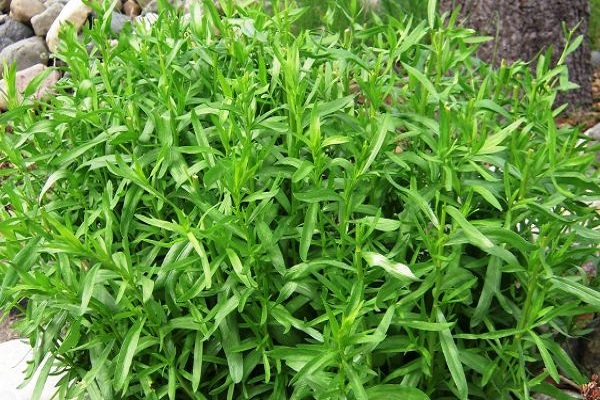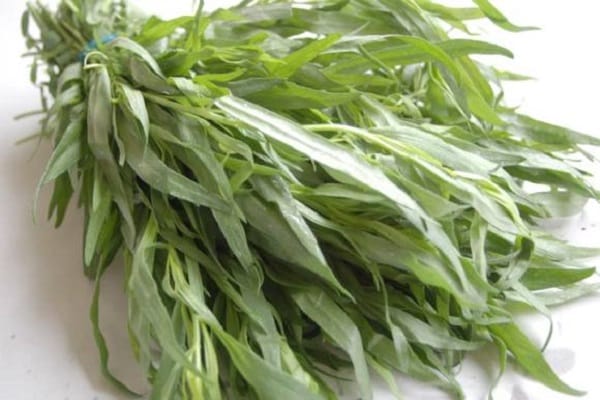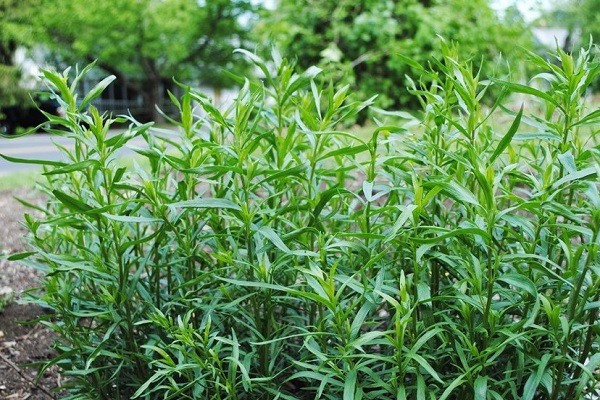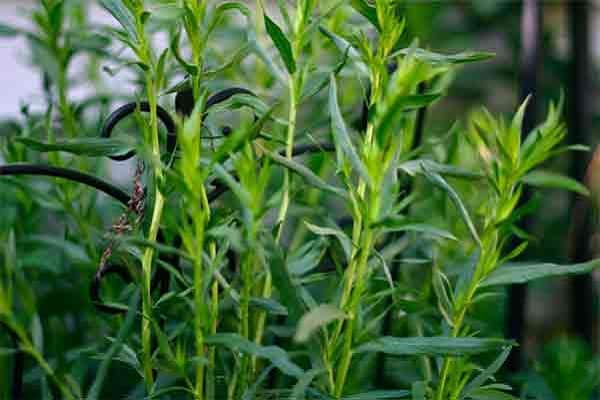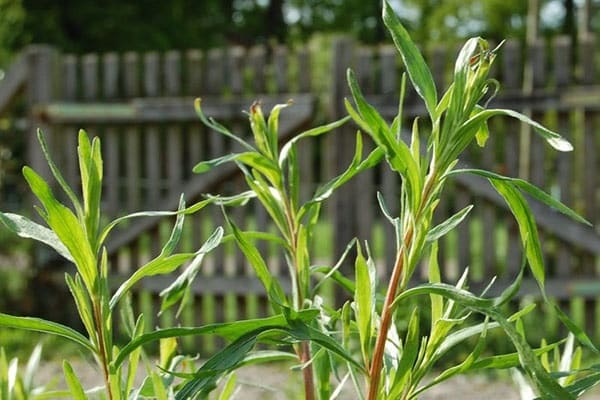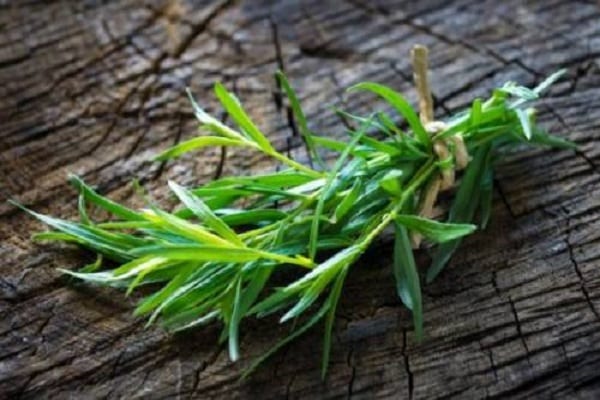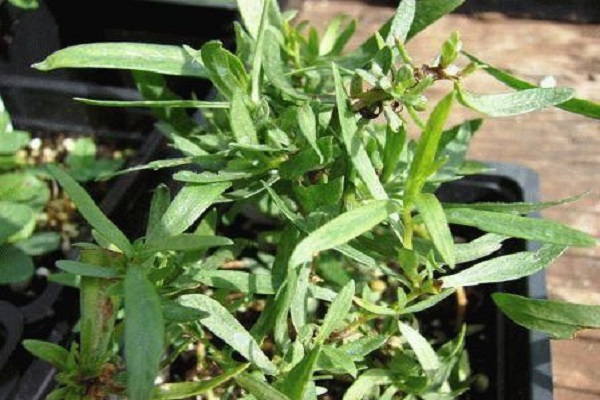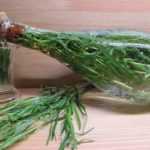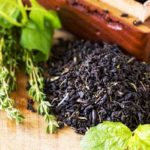A very long time ago, a spicy herb with medicinal properties was discovered in Europe - tarragon, which is also commonly called tarragon or dragon wormwood. Since then, botanists have identified many types of tarragon, which are used in cooking and medicine. The herb is rich in essential oils, which have anti-inflammatory, antibacterial, soothing, anthelmintic effects. Tarragon can be divided into two main varieties - fragrant and non-fragrant.
Description of the plant
Tarragon belongs to the Asteraceae family, a type of wormwood.It can be easily recognized by its tall stems on which narrow green leaves grow. The plant blooms in the last month of summer, and its panicle inflorescences are white or pale yellow. Tarragon tolerates winter well, since its above-ground part dies off, and the root system is in the ground and can withstand severe frosts.
Tarragon is a bushy perennial plant that grows on almost any soil. It can be found both in North America and in Europe and Asia. The plant is unpretentious and does not require special soil fertilization. The collection of green leaves for seasoning occurs from the beginning of summer until autumn. Tarragon is dried in the shade from the sun, so that the wind does not hit it.
Types and varieties of tarragon
There are many varieties of bushy fragrant tarragon, bred by domestic and foreign breeders. Since this plant is quite picky, there are seeds that can grow in any area. Green tarragon leaves have a specific aroma and contain quite a lot of vitamin C; they are actively used in medicine, pickling, and preparing sauces for fish and meat dishes. All varieties are suitable for both culinary and medicinal use.
It is not recommended to use tarragon if you have gastrointestinal diseases, during pregnancy, lactation, or if you have an individual intolerance.
Goodwin
The most aromatic variety of tarragon, grows up to 1 meter in height and has a strong spicy taste with a hint of bitterness. You can collect greens from it already in the second year of the growing season, and they use it in cooking, adding it to pickles, and in medicine. From the Goodwin tarragon bush, up to 0.5-0.6 kilograms of spicy greens are collected. It grows both in the ground and in a pot on the windowsill.
Monarch
Frost-resistant variety with a stem up to 1.5 meters high.Narrow emerald leaves have a pleasant refreshing taste and spicy aroma, which persists even when dried. Therefore, this variety of tarragon is often added to salads, pickles, drinks, and is also used to improve stomach function. The first harvest is harvested 25-30 days after the start of active germination, in the second year of growth.
Gribovsky
The most popular variety of tarragon, because it is resistant to frost, various diseases and can grow in one suitable place for up to 15 years. The grass with dark green, sharp leaves grows up to 1 meter in height. Used in cooking and medicine. You can cut the leaves a month after germination, in the second year after planting.
French
Grass with dark green leaves combined with small white flowers about 0.5 meters high fits well into landscape design.
Its greens are used as additives to cheeses, meats, and pickles. Tarragon of this variety is resistant to cold and disease. It produces a good harvest - up to 0.6 kilograms of greenery per bush.
Mexican Aztec
Mexican Aztec, or simply Aztec, is a bushy plant about 1.5 meters high. Its herb has a strong spicy aroma with perceptible anise notes. It can grow in one permanent place for up to 7 years, and the first crop is cut a month after germination in the 2nd year of growth. Used as a seasoning for dishes and an additive to drinks.
King of Herbs
The most noticeable scent is anise. It survives short periods of drought and cold well. This variety is used both in the food industry and in medicine. It is used in fresh and dry conditions. The first harvest is cut after 30 days, the next - after 90.
It will not be difficult to obtain an aromatic, spicy seasoning from tarragon if you plant the seeds of the plant in your garden or on the windowsill of your home in early spring. In just a year you will be able to enjoy the first harvest from the bushes.
If desired, you can plant a plant variety that will grow in one area for many years and not require replanting. But some varieties produce fresh, tasty leaves for only 3 years, and then they age and acquire a bitter taste.

